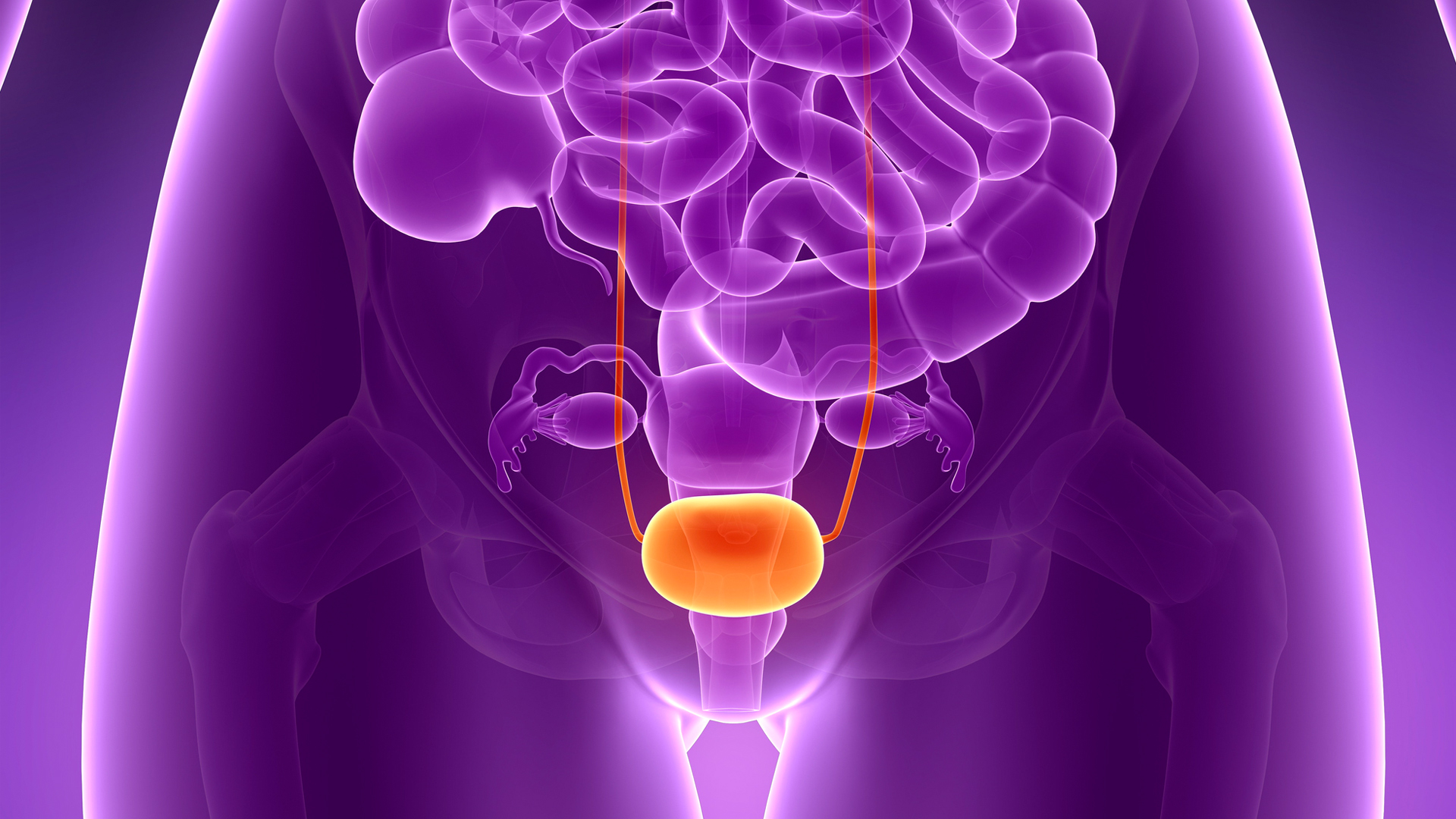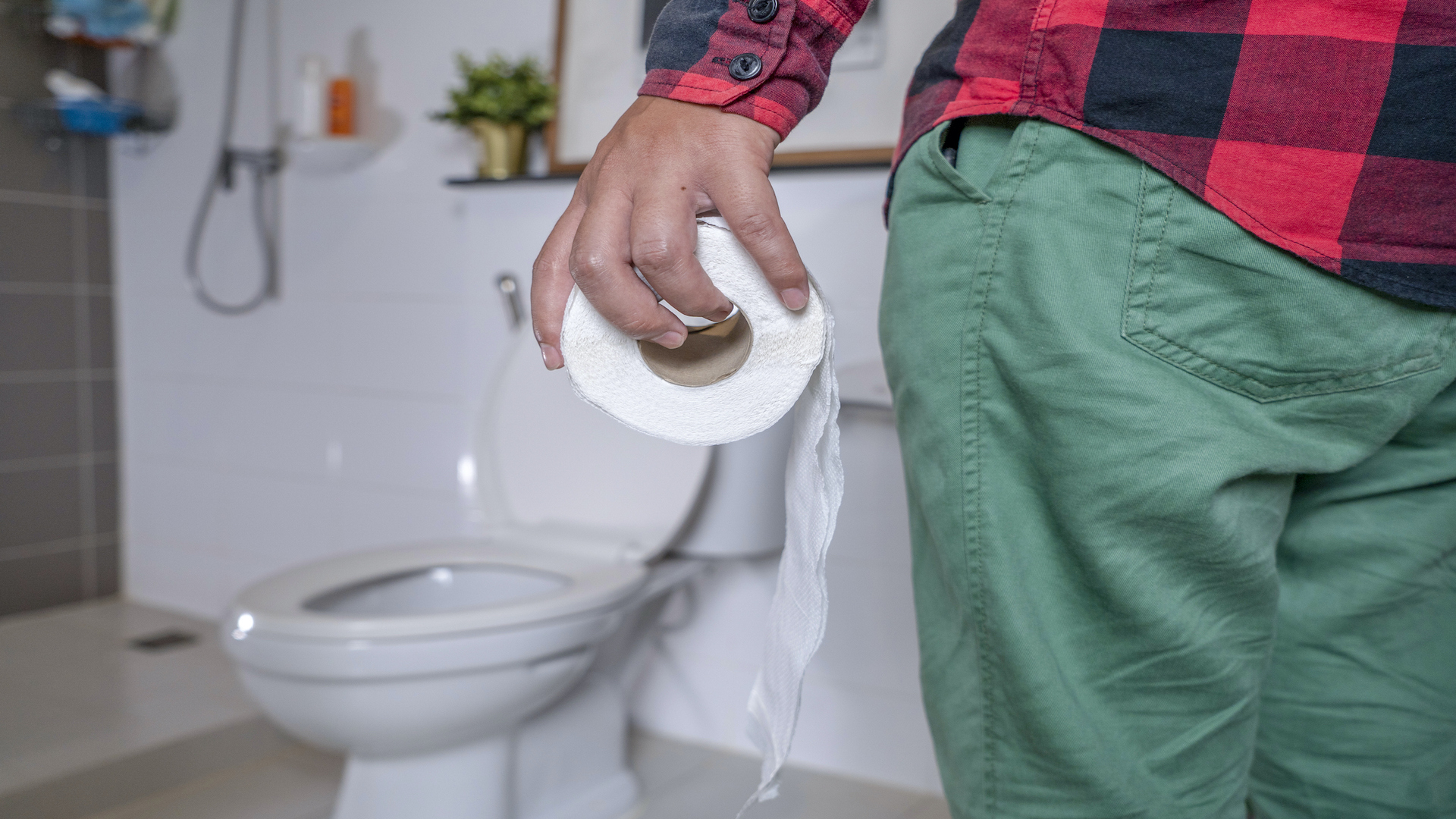Bladder: Facts, function and diseases
The bladder is a round, bag-like organ that stores urine.

The bladder is a round, bag-like organ that stores urine. It is located in the pelvic area, just below the kidneys and right behind the pelvic bone. While it is basically a fleshy storage tank, it is very complex in its design.
How big is the bladder?
An empty bladder is about the size and shape of a pear, according to the National Cancer Institute. It can stretch much larger when needed, though, and shrinks back when it is empty. In fact, it can hold around 16 ounces (almost half a liter) of urine at one time for two to five hours comfortably, according to the U.S. National Library of Medicine (NLM).
It’s normal to urinate around six to eight times in a 24-hour period, according to the National Institutes of Health (NIH). More frequent trips to the bathroom may indicate a problem with the bladder, though it is common to urinate more as one ages.
What does the bladder do?
The bladder is connected to the kidneys by two long tubes called ureters. When urine is produced by the kidneys, it travels down the ureters to the bladder, where it is stored. The bladder has four layers.
From the inside out, the epithelium is the first layer on the inside of the bladder. It acts as a lining for the bladder. The lamina propria is the next layer. It consists of connective tissue, muscle and blood vessels. Wrapped around the lamina propria is the layer called the muscularis propria or detrusor muscle. According to the National Cancer Institute, this layer consists of thick, smooth muscle bundles. The final, outer layer is the perivesical soft tissue, which is made up of fat, fibrous tissue and blood vessels.
The other parts of the bladder are located at the bottom of the sack. An opening at the bottom of the bladder is connected to the urethra. A circular, muscular sphincter pinches tight to keep the opening and the urethra from leaking urine.
When a person urinates, the detrusor muscles contract to squeeze the urine out of the bladder while the sphincter relaxes to open the opening of the bladder and urethra. The opening at the bottom of the bladder empties urine into the urethra, where it then empties from the body.
Bladder diseases and conditions
Many diseases and conditions can originate in the bladder.
The most common bladder problems in women are frequent urges to urinate and leakage of urine, said Adam Ramin, a urologic surgeon and founder of Urology Cancer Specialists in California. Leakage and frequent urges are often caused by the decreased capacity of the bladder and overactivity of the bladder. An overactive bladder can be caused by a wide range of conditions, including pelvic muscle weakness and stroke, according to the Urology Care Foundation. Leakage of urine, or incontinence, can also be caused by bladder spasms or stress. A bladder sling is sometimes used to treat stress urinary incontinence.
"The most common bladder problems in men are frequent urination at night and incomplete bladder emptying,” Ramin told Live Science. “This is usually due to an enlarged prostate causing obstruction of bladder emptying.”
Bladder infections may be another cause of frequent urination. Bladder infections, also called cystitis, are among the most common bacterial infections, according to Harvard Health. Around one-third of all females get a bladder infection at least once in their lifetime. Some of the symptoms include burning or pain during urination, needing to urinate a lot (despite only passing a small amount of urine each time), sudden need to urinate, lower abdomen pain and cloudy or bloody urine.

Another problem that can originate in the bladder is bladder cancer. About 712,644 people in the United States live with bladder cancer, according to the National Cancer Institute. It typically affects older people, though younger people have been known to develop bladder cancer, according to the Centers for Disease Control and Prevention (CDC). Some symptoms of bladder cancer include blood in the urine, frequent or painful urination and back or pelvic pain.
An anterior prolapse, also called a prolapsed bladder or cystocele, is a bladder problem specific to females. It happens when the tissue between a woman's bladder and vaginal wall weakens due to a strain. The weakening allows the tissue to stretch and the bladder bulges into the vagina, according to the Urology Care Foundation.
Bladder stones are caused by concentrated urine that crystallizes in the bladder. Typically, people who have problems emptying their bladder have problems with bladder stones, according to the NIH. Though many bladder stones are so small they can barely be seen with the human eye, one man was found to have an egg-shaped bladder stone that weighed 1.7 lbs. (770 grams) and measured 4.7 inches by 3.7 inches by 3 inches (12 by 9.5 by 7.5 centimeters). This isn't the largest bladder stone on record, though. The largest bladder stone was 7 inches long, 5 inches thick and 3.7 inches tall (17.9 by 12.7 by 9.5 cm), and weighed 4.2 lbs. (1.9 kg), according to Guinness World Records.
Promoting good bladder health
Sometimes, there is no choice but to hold urine, but it may not be good for the bladder. "Holding your urine for a short period of time, usually up to one hour, is typically okay," Ramin said. "However, protracted and repeated holding of urine may cause over-expansion of bladder capacity, transmission of excess pressure into the kidneys, and the inability to completely empty the bladder. These problems in turn may lead to UTI [urinary tract infection], cystitis and deterioration of kidney function."
Drinking plenty of water throughout the day can also help prevent bladder stones by preventing the concentration of minerals that cause the stones. The Urology Care Foundation suggests drinking six to eight cups of water each day and cutting down on caffeine and alcohol.
This article is for informational purposes only and is not meant to offer medical advice.
Sign up for the Live Science daily newsletter now
Get the world’s most fascinating discoveries delivered straight to your inbox.

Anna Gora is a health writer at Live Science, having previously worked across Coach, Fit&Well, T3, TechRadar and Tom's Guide. She is a certified personal trainer, nutritionist and health coach with nearly 10 years of professional experience. Anna holds a Bachelor's degree in Nutrition from the Warsaw University of Life Sciences, a Master’s degree in Nutrition, Physical Activity & Public Health from the University of Bristol, as well as various health coaching certificates. She is passionate about empowering people to live a healthy lifestyle and promoting the benefits of a plant-based diet.










